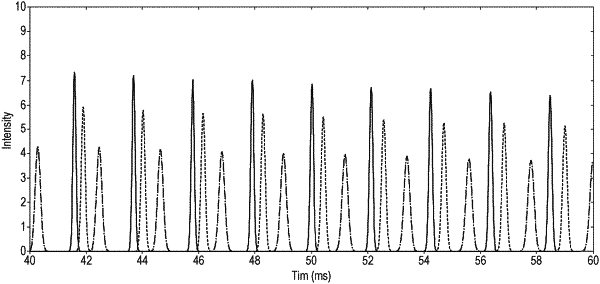| CPC G01N 27/624 (2013.01) [G01N 27/623 (2021.01); H01J 49/0031 (2013.01); H01J 49/0036 (2013.01); H01J 49/22 (2013.01); H01J 49/401 (2013.01); H01J 49/406 (2013.01)] | 16 Claims |

|
1. A method comprising:
providing a sample to be analysed;
separating successive populations of ions from said sample in a separator, wherein said populations of ions are introduced into said separator at intervals, and the intervals are timed such that ions in a subsequent population of ions overlap ions in a preceding population of ions, within the separator;
varying one or more parameters of said separator such that different populations, of said successive populations of ions, experience different separation conditions;
detecting ions from said populations of ions and obtaining a convolved data set; and
de-convolving said convolved data set using the known variance of the parameters and outputting data corresponding to the successive populations of ions.
|
|
15. An apparatus for separating and analysing ions, the apparatus comprising an ion separator, a detector and a control system, wherein the control system is arranged and adapted to:
separate successive populations of ions from a sample, and introduce said populations of ions into a separator at intervals, wherein the intervals are timed such that ions in a subsequent population of ions overlap ions in a preceding population of ions, within the separator;
vary one or more parameters of said separator such that different populations, of said successive populations of ions, experience different separation conditions;
detect ions from said populations of ions and obtain a convolved data set; and
de-convolve said convolved data set using the known variance of the parameters and outputting data corresponding to the successive populations of ions.
|